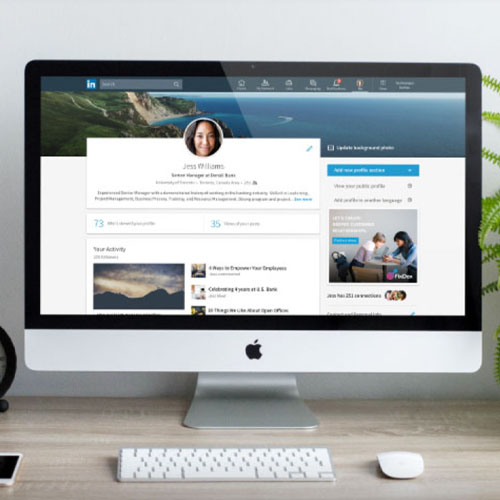Careers advice: Building your personal brand
Everyone has a personal brand. Do you know what yours is? In this latest careers advice article WBS Careers Manager, Lisa Carr, offers eight steps to do just that.
I often ask people when coaching them for interviews “what is your reputation within your firm and industry?” I am surprised by how few people are able to tell me. As Jeff Bezos, the founder of Amazon said: “Your personal brand is what people say about you when you aren’t in the room.”
Joseph Liu, Careers Coach and personal brand expert, points out that “if you don’t define who you are, then others will do it for you”. By proactively managing your brand you can ensure that you are reflecting a true picture, and a positive message, about yourself.
Here is our step-by-step guide on how to define, build and communicate your personal brand:
1 Know what you stand for
Successful brands are authentic. To resonate, your brand needs to reflect your genuine values and your unique approach to work. Make sure you clarify what these are – there are exercises to help you in the online career management course.
2 Clarify what you want
Ask yourself what you are aiming to achieve in your professional life. Are you looking for an internal promotion or a career move? Into what? If you run your own business, what clients or other stakeholders are you hoping to impress?

3 Identify your target market
Who are the decision-makers who can give you what you want? Who else might influence them? Where are they based? These people are your target market.
4 Define your USPs
The best marketing campaigns stress what is unique and distinctive about the product and how it outperforms competitors. What aspect of your track record, skills, experience, values and approach to work will be seen as most valuable by your target market? What is distinctive about your offer compared to other candidates? Decide on three or four key messages you want to convey in your personal brand.
5 Review your online presence
Have you googled yourself recently? Take a look at what your target market will see. How comfortable are you with what you find? You may want to google your competitors too.
A key part of your brand is your LinkedIn profile. How consistent is this with your brand? How strong a message does it send? You may need to edit your headline and summary to reflect your key messages.
If your personal social media accounts are inconsistent with your professional brand then review your privacy settings. Consider setting up separate accounts for personal and business use.

6 Extend your communication channels
Think about where your target audience get their information. Where do they keep abreast of developments? What channels are your competitors using? Consider whether to extend the range of channels you use. Online channels might include a blog, YouTube channel, online forums, Twitter account or Instagram feed. Offline channels might include professional bodies or business networks.
People with strong personal brands contribute to thought leadership in their field. Consider using SlideShare to share presentations, raise a topic on professional forums or start your own blog. Ensure there are links to these on your LinkedIn profile. Think about adding these to your email signature.
7 Reflect on your personal impact
However strong your online presence, it is your day-to-day personal impact that defines your brand for colleagues and bosses. Much of this is through non-verbal clues; how you dress, how you speak, your posture and facial expressions, even what your desk looks like. Honestly, what do you think these convey about you? Would you like to change anything? There is a wealth of advice on improving your personal impact in this month’s careers lesson on marketing yourself.
8 Keep it current
Creating a personal brand is one thing, embedding it is another. It is vital that you devote time regularly to updating profiles, adding content to your channels and maintaining key relationships. An outdated blog or social media profile can undermine your brand. Think of it not as another thing for your to-do list but as an investment in your professional future.




 X
X Facebook
Facebook LinkedIn
LinkedIn YouTube
YouTube Instagram
Instagram Tiktok
Tiktok